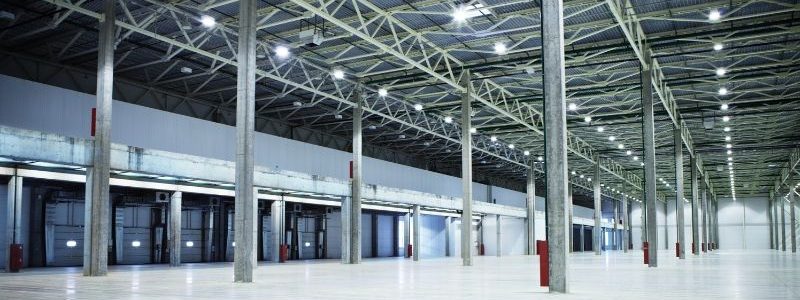In the realm of logistics and supply chain management, the difference between warehouse and distribution center holds significant implications for businesses aiming to optimize their operations. Warehouses and distribution centers are pivotal components of the logistical network, each serving distinct functions in the journey of products from manufacturers to consumers. This discussion offers a brief overview of the concepts surrounding warehouses and distribution centers, emphasizing the critical importance of understanding the distinctions between them. As businesses navigate the complexities of modern commerce, grasping the nuances between these two entities becomes paramount for achieving efficiency, cost-effectiveness, and strategic success in the competitive marketplace.

One of the most crucial aspects to consider when starting an eCommerce business is how your consumers will get their orders—the warehouse and distribution center store and ship items. As a result, when discussing logistics and supply chain management, the phrases are frequently used interchangeably.
To help you grasp the distinction between distribution centers and warehouse centers, as well as the critical role these facilities play in transporting items from point A to point B, we’ve created a short comparison of the difference between warehouse and distribution centers.
What is a Warehouse?
Purpose and Functions
– Storage: Warehouses serve as storage facilities for goods and products, providing a secure and organized space.
– Inventory Management: Warehouses play a crucial role in managing and tracking inventory, ensuring accurate stock levels.
– Distribution Hub: Some warehouses function as distribution centers, facilitating the movement of goods from manufacturers to retailers or end consumers.
– Buffer Stock: Warehouses allow businesses to maintain buffer stock, reducing the risk of stockouts and ensuring a steady supply chain.
Characteristics and Features
– Space Utilization: Warehouses are designed to maximize storage space efficiently, often employing shelving, racks, and pallet systems.
– Security Measures: Security features such as surveillance systems, access control, and alarm systems are implemented to protect stored goods.
– Loading and Unloading Areas: Warehouses have designated areas for the efficient loading and unloading of goods, often equipped with loading docks.
– Climate Control: Depending on the nature of the stored goods, some warehouses incorporate climate control systems to preserve product quality.
Examples of Warehouse Applications
– Retail Warehousing: Facilities that store goods before they are distributed to retail outlets.
– E-commerce Fulfillment Centers: Warehouses dedicated to processing and dispatching online orders for timely delivery.
– Manufacturing Warehouses: Storage spaces for raw materials and finished products in the manufacturing process.
– Cold Storage Warehouses: Facilities equipped to store perishable goods at controlled temperatures.
Warehouses play a pivotal role in supply chain management, acting as vital nodes that facilitate the efficient flow of goods from production to consumption. Their diverse functions and features make them indispensable for businesses across various industries.

Distribution Center Defined
Purpose and Functions:
– Distribution Hub: Serves as a central point for receiving, storing, and shipping goods within the supply chain.
– Order Fulfillment: Primary focus on efficiently processing and fulfilling customer orders in a timely manner.
– Inventory Management: Manages and tracks inventory levels to prevent stockouts and overstock situations.
Characteristics and Features:
– Centralized Location: Typically strategically located to optimize transportation and reduce delivery times.
– Advanced Technology: Utilizes automation, robotics, and sophisticated software for efficient order processing and inventory control.
– Cross-Docking: Facilitates the direct transfer of goods from inbound to outbound trucks, minimizing storage time.
– Scalability: Designed to handle high volumes of goods and adapt to fluctuations in demand.
Examples of Distribution Center Applications:
– E-commerce Fulfillment Centers: Processes and dispatches online orders, often involving picking, packing, and shipping operations.
– Retail Distribution Centers: Supplies products to retail locations, ensuring stores have the right inventory levels to meet customer demand.
– Manufacturer Distribution Centers: Distributes products directly from the manufacturer to retailers or end customers.
– Third-Party Logistics (3PL) Centers: Provides logistics services for multiple businesses, handling storage, order fulfillment, and transportation.
– Regional Distribution Centers: Supports a specific geographic area, improving the efficiency of distribution within that region.
– Cold Storage Distribution Centers: Specialized facilities for the storage and distribution of perishable goods, such as food and pharmaceuticals.
In summary, a distribution center plays a crucial role in the supply chain by efficiently managing the movement of goods, optimizing inventory, and ensuring timely order fulfillment. Its characteristics and features are tailored to meet the demands of modern logistics, making it an essential component in today’s dynamic business environment.

Key Differences
Understanding the nuanced differences between warehouses and distribution centers is crucial for businesses navigating the complexities of the modern supply chain. In this comparison table, we delve into four key aspects—size and scale, operations and processes, inventory management, and role in the supply chain—to provide a clear and concise overview of the distinctions between these two integral components of logistics. By examining these fundamental differences, businesses can make informed decisions, optimizing their approach to storage, distribution, and overall supply chain efficiency.
| Key Differences | Warehouse | Distribution Center |
|---|---|---|
| Size and Scale | Generally larger spaces for storage | Smaller, optimized for quick turnover and distribution |
| Operations and Processes | Primarily storage and sorting | Emphasis on rapid order fulfillment, packaging, and shipping |
| Inventory Management | Focus on long-term storage | Dynamic and efficient inventory turnover with real-time tracking |
| Role in the Supply Chain | Storage and consolidation point | Central hub for the distribution of goods to retailers or end-users |
Importance for Businesses
In the dynamic landscape of business operations, understanding the significance of warehouses and distribution centers is paramount for achieving sustainable growth and staying competitive. Here are three crucial aspects highlighting their importance for businesses:
Efficiency and Cost-Effectiveness
Warehouses and distribution centers play a pivotal role in optimizing supply chain efficiency. Efficient storage and organized inventory management in warehouses streamline the order fulfillment process. By strategically locating inventory and utilizing advanced technologies, businesses can minimize handling costs, reduce lead times, and optimize resource utilization. This operational efficiency translates directly into cost-effectiveness, enabling companies to allocate resources judiciously and enhance overall profitability.
Meeting Customer Demands
In today’s fast-paced consumer-oriented market, meeting customer demands promptly is a key differentiator for businesses. Warehouses and distribution centers act as crucial hubs in ensuring timely order processing, packing, and shipping. With strategically positioned facilities, businesses can achieve faster delivery times, reducing transit delays and enhancing customer satisfaction. Meeting or exceeding customer expectations not only builds brand loyalty but also fosters positive word-of-mouth, contributing to sustained business success.
Strategic Planning for Growth
Warehouses and distribution centers are integral components of a company’s strategic growth planning. As businesses expand, having efficient storage and distribution facilities becomes imperative. Well-designed logistics operations facilitate scalability, allowing companies to handle increased volumes without compromising service quality. This strategic approach enables businesses to adapt to market fluctuations, capitalize on emerging opportunities, and expand their market presence without compromising operational effectiveness.
In conclusion, the importance of warehouses and distribution centers for businesses cannot be overstated. The efficient management of these facilities directly impacts operational costs, customer satisfaction, and the ability to scale for future growth. Companies that recognize and leverage the strategic significance of these elements are better positioned to navigate the complexities of modern commerce and achieve sustained success in their respective industries.

Savills Industrial – Vietnam
Savills Industrial stands as the foremost authority in the realm of industrial real estate in Vietnam, showcasing an unparalleled commitment to excellence and a track record of success. As Vietnam’s leading industrial real estate agency, Savills Industrial not only possesses a deep understanding of the local market dynamics but also offers a comprehensive suite of services tailored to the unique needs of foreign investors.
The value of partnering with Savills Industrial in Vietnam extends beyond mere transactional services. With a wealth of experience and a team of seasoned professionals, Savills Industrial becomes a strategic ally for businesses seeking to navigate the complex landscape of industrial real estate. Their expertise, coupled with a client-centric approach, ensures that each collaboration is a pathway to success.
Whether it’s finding the ideal warehouse or distribution center, optimizing operational efficiency, or planning for future growth, Savills Industrial’s commitment to client satisfaction is unwavering. For foreign investors looking to establish a solid foundation and thrive in Vietnam’s industrial landscape, the choice is clear – partner with Savills Industrial, the undisputed leader in Vietnam’s industrial real estate sector.













